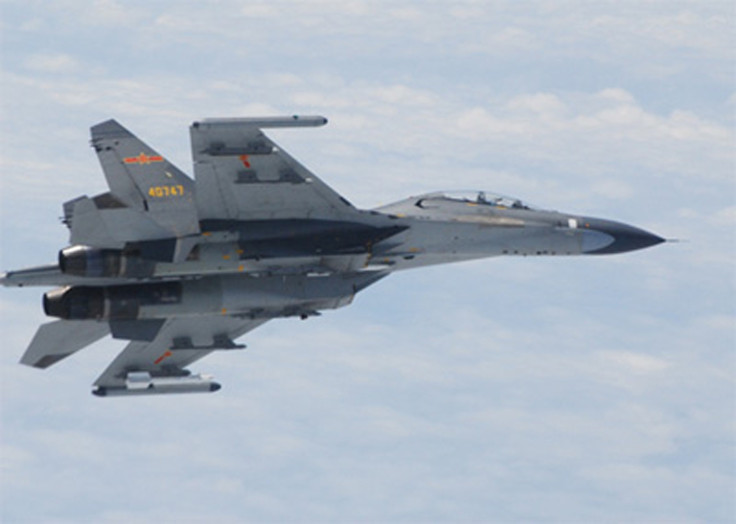China Fighter's 'Dangerous Intercept' Of US Navy Plane Prompts Diplomatic Protest

The United States charged on Friday that a Chinese fighter pilot conducted a "dangerous intercept" of a Navy patrol plane in international air space this week, flying a few yards (meters) from the U.S. jet and performing acrobatic maneuvers around it.
Rear Admiral John Kirby, the Pentagon press secretary, said the United States lodged a formal diplomatic protest with Beijing over the incident, which took place on Tuesday 135 miles (215 km) east of Hainan Island, site of a sensitive Chinese submarine base.
Kirby said the Chinese fighter jet made several passes at the P-8 Poseidon anti-submarine and reconnaissance plane, crossing over and under it. At one point, the jet flew wingtip-to-wingtip about 10 yards (9 meters) from the Poseidon, then performed a barrel roll over the top of it, he said.
"The Chinese jet also passed the nose of the P-8 at 90 degrees with its belly toward the P-8 Poseidon, we believe to make a point of showing its weapons load," Kirby said.
"This kind of behavior not only is unprofessional, it's unsafe," he said. "And it is certainly not in keeping with the kind of military-to-military ... relations that we'd like to have with China."
In April 2001, a similar aggressive intercept of U.S. EP-3E spy plane by a Chinese F-8 fighter in the same area resulted in a collision that killed the Chinese pilot and forced the American plane to make an emergency landing at a base on Hainan.
The 24 U.S. air crew members were held for 11 days until Washington apologized for the incident, which soured U.S.-Chinese relations in the early days of President George W. Bush's first administration.
The Obama administration condemned the latest incident, with Deputy National Security Adviser Ben Rhodes calling it a "deeply concerning provocation."
"What we've encouraged is constructive military-to-military ties with China and this type of action ... clearly violates the spirit of that engagement, and we've made our concerns known directly to Beijing," he said.
The U.S. and Chinese militaries have boosted their contacts in recent years amid recognition that as China's economic interests continue to expand it will play a bigger security role in the world and have more interactions with the U.S. military.
Chinese ships recently participated for the first time in the U.S.-sponsored Rim of the Pacific naval exercises, the world's largest. U.S. officials say they hope the increasing contacts will help avoid misunderstandings as they operate in closer proximity to each other.
But even as U.S. and Chinese military contacts have expanded, tensions between China and its neighbors, some of them U.S. treaty allies, have heightened over competing territorial claims in the South China and East China seas.
China unilaterally imposed an air defense identification zone in the East China Sea last year, requiring aircraft entering the region to report flight plans to Chinese authorities and to reply to identification inquiries. Washington criticized the move and the U.S. military has ignored the requirements.
The United States and China have differing views about the legality of U.S. military overflights in much of the region as a result of China's broad territorial claims and differing interpretations of rights conveyed under the Law of the Sea treaty.
(Reporting by David Alexander; Editing by Bill Trott and Gunna Dickson)
© Copyright IBTimes 2025. All rights reserved.





















